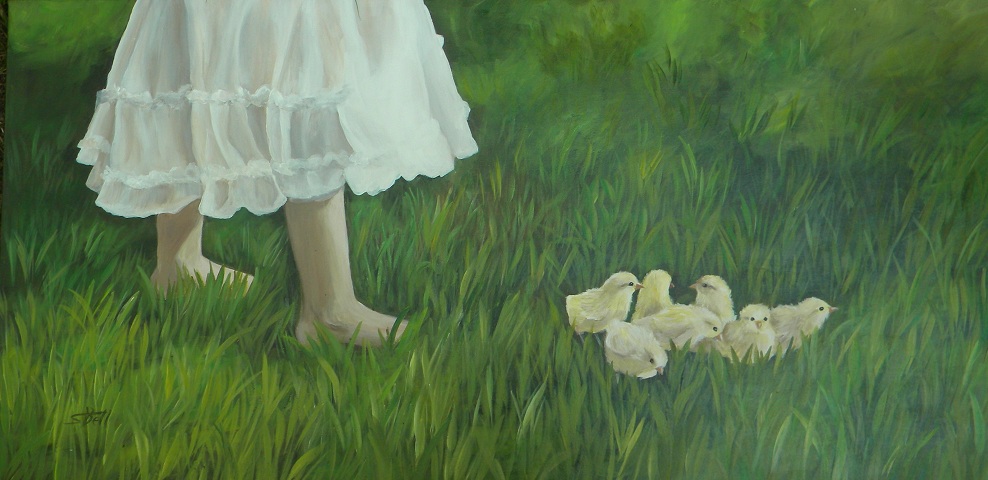If you want try your hand at painting or just want to experiment with a new medium, painting with acrylics is a great way to go. As one of the most forgiving mediums, acrylic paints will cover over each other, making it easy to make changes or correct mistakes. They are water-based, so clean-up is easy, too. They come off of skin well, but be sure to wear an artist apron, smock, or old clothes, as the paints don’t come out of fabric.
Made from pigment suspended in a polymer emulsion, acrylic paints have a plastic feel when dry. You can use acrylics on many different supports (or surfaces), including canvas, wood, fabric, paper, and even rocks.
When painting with acrylics, you’ll find they’re similar to oil paints in that:
- You work on your painting from back to front — from the background to the foreground.
- They blend well.
- You can create texture with the paint.
 Acrylics differ from oil paints in that they dry very quickly. Blending is sometimes difficult because of how quickly they dry. However, there are products you can add to the paint to slow down the drying time.
Acrylics differ from oil paints in that they dry very quickly. Blending is sometimes difficult because of how quickly they dry. However, there are products you can add to the paint to slow down the drying time.
You can create a lot of different effects with acrylics – from realistic to whimsical to abstract.
Ready to give acrylics a try? Here are the supplies you’ll need to get started:
Acrylic Paints – You can find these at all different prices. The price reflects the quality of the paint. Acrylic craft paints can be purchased for about $1 per bottle. These work well on wooden projects and rocks. For a painting, however, it’s important to invest in better paint. There are a number of manufacturers who make both student and professional quality paints.
Canvas – If just starting out, I would purchase a student-grade canvas at a local art or craft store. An 8” x 10” canvas usually costs about $2 – $3 and an 11” x 14” canvas costs between $3 and $4. As you become more confident with the paints, you can purchase more expensive canvases; the better the canvas, the more it will cost. Sometimes I purchase canvases online from discount art supply stores.
 Brushes – You can usually purchase a set of brushes of varying sizes for about $12 – $15. It’s important that you get decent-quality brushes, as cheap brushes usually don’t work well at all. There’s nothing more frustrating than trying to paint with poor brushes – you just can’t get the results you want. As with all art supplies, the more expensive the brushes, the better the quality. A good flat brush, a medium round brush or two, and a very small round brush should be enough to start with.
Brushes – You can usually purchase a set of brushes of varying sizes for about $12 – $15. It’s important that you get decent-quality brushes, as cheap brushes usually don’t work well at all. There’s nothing more frustrating than trying to paint with poor brushes – you just can’t get the results you want. As with all art supplies, the more expensive the brushes, the better the quality. A good flat brush, a medium round brush or two, and a very small round brush should be enough to start with.
Container for Water – a large cup or mug will do. Use the water to clean your brushes as you change colors. You can also use it to thin your paint to create a sort of glaze.
Paper Towel – to dab your brushes on
Palette (I usually just use a foam plate)
Reference picture
Pastel or Charcoal – these work well for drawing on your painting both before and after you’ve started. For example, if you’ve already painted on the background but you’d like to draw a flower before you paint it, you can draw it on the background in pastel. If you make a mistake in the drawing, simply dampen a paper towel with some clean water and wipe it off.
What have you painted in acrylics recently?


Please note: Only family-friendly comments will be published.